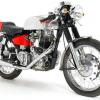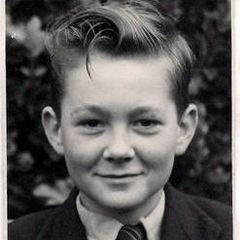Contributor Leaderboard
Popular Content
Showing content with the highest reputation on 03/11/18 in all areas
-
Its coming up to 100 years since the First World War ended. The North East War Memorials Project (NEWMP) website is an excellant source of information containing details of the brave men and women who served in that conflict and their memorials. If you are looking for information about your relatives, it may be on this website. See the attached NEWMP leaflet for more information.1 point
-
Thank you CL - my Google search didn't bring up that article - think I might have to move off Windows Vista1 point
-
Hi Canny Lass! First off, many, many thanks for your kind re-assuring comments! My other pseudonym among my old pit marra's ..is .."Bill the gud taaaka!!..[.."the good talker"!] I tend to ramble off the beaten track..then realise later and think...have a went owa the top?...!! Everything I write about is all my own experience with no references to books of any kind whatsoever!..I don't need books..I went through it and aam fortunate to have taken such an interest in mining at the time,and also have a vivid memory of events and people..although my recall of a lot of my Marra's names are beginning to fade..and I blame the drugs I am on for heart and lung..and other men's problems!heh heh! I always thought "Oldgate" etc..referred to the old Castle walls and gateways!.. My eldest Son is a Record Producer/Engineer,in London,and has been for the last 31years. A few years ago, He was working on an Album by a Danish Band called "Efterklang"..who were like the Beatles at the time for popularity. After a few weeks in Denmark,it became apparent to him of the Nordic influence on our local dialect. One of the lads in thi band spoke decent English and said jokingly.[and intentionally!]..."When you GAAN YEM..give our regards to your people..."[etc etc]..and in conversation,he spoke lots of words which we use as slang,as well as "proper English" words. Everybody my Son met or dealt with , both professionally ,and casually,in shops ,for instance,were all lovely people. Enywheh!!.....back to mining! While I was writing my long comments,I realised that I didn't explain more about the use of the word "Plane"..when talking about my Brother's first job. Bedlington Aad Pit was the only Pit I ever heard that term used for a haulage road.My assumption is that it has it's origin in old Engineering speak..a Drift mine,for instance,is driven either up or down..an inclined "plane"..[or.."Declined"...or "Anticline"..] ...a screw jack uses the principle of the "Inclined Plane"...the "Harvey East" was a haulage road in the "Harvey " seam,[nearly a thousand feet down underground],which was driven on a horizontal "Plane",by virtue of the Geology of the Seam and surrounding strata.[as opposed to the strata at the High Pit,which ,on a westerly direction,rose steadily until at some point outcropping took place..i.e. where the coal seams broke to the surface causing pitfalls in the fields ,where mining operations had taken place]. The interesting thing about that place,was,the actual "Hauler" ..[" Haaalaa" ..in pit slang],that worked the system of rope haulage. Every pit I worked at,or visited,had haulers in every roadway..[except the High Pit...Tailgates only!],but the Hauler in the Harvey seam,in it's heyday,[many years ago],used to drive THREE roadway rope systems ,either all together,or individually..whenever situations demanded this. I cannot remember the other two roadways now,but I have a clear picture in my head of the actual Hauler. Electrically driven,with three separate driving drums,as opposed to the usual.. One only. Each drum had it's own engaging clutch,and braking mechanism,so if one "Plane" needed to be halted,after receiving a signal on the "Bells"..[signalling system],to stop the rope,the Haulerman would simply disengage the clutch for that roadway,stop that driving drum,and leave the others running. The system of driving the rope involved using an "Endless" loop of steel stranded wire rope,usually,but not always,about 5/8" thick,and was "Lapped" [wound] around the drum three times,to provide the friction required to move the rope,and then the rope was fed around "Sheaves"[large wheels with wide flanges]..to direct it's path along the intended roadway..[or "Plane".] The rope ran the whole length of that roadway,sumtimes a mile or more,in between the rails and supported by rollers every few yards which were mounted on the sleepers. At the inbye end of the Plane,the rope passed around a "Return Wheel"[..or Sheave],and usually,but not always!..came back outbye,running along a different set of rails. ..the rail sets ran parallel all along the length of the roadway. So you can see that Chummins,[empties],were hauled inbye on the one set of rolleyway,and returned on the other set of rails..as "Fullun's".[full tubs],having been filled at the Loader-end,as described above. The rolleyway's were known as .."The Full side"..or..."The Chum side". What was interesting about THIS particular Hauler,was the huge "Wheel-block",which was mounted beneath the walkway ,not far from the Hauler-house,and in a designated point,so all three ropes could leave the hauler,be directed into their intended roadways,and all three return ropes could be directed back to the hauler. Sounds simple! The Engineers who built the Hauler couldn't figure out the solution,as to how the ropes could be fed to three roadways running in three different directions!..[to be fair...they weren't "dumb pitmen"]..[as the old adage went!]...they were brainy Engineers!! Enter old Jack Anderson!..Jack was one of the Overmen in charge,in the Harvey Seam,and who was regarded by all the men as "A GUD Pitman". He saw the problem,and went home at the end of his shift and pondered for days,with pencil and paper..finally coming to work with the answer! This was LONG...LONG... before my Brother was born,probably, [and HE was born in 1941!] ,and Jack's "Wheel-block" remained in working order until not long before the pit closed in 1971...and it will STILL be there as I write...cos when the pits closed under Maggie,[AND Labour as well!],very little ,if anything at all,was salvaged! This Wheelblock,resembled a giant clock mechanism,as big as the whole floor area of my house,and you had to see it ti wonder how Jack had figured it all out..it was a myriad of huge wheels..["Sheaves"],spinning slowly in different directions,some clockwise ,others anti-clockwise,with ropes like a spider's web all moving in different directions.. accordingly!!..amazing!..and it was all framed by a huge-section girder framework anchored to the stone floor. With hindsight,I wish I had taken my camera down to capture that one feat of engineering produced by a pit Official who had worked his way up from being a shaft-laddie..to a Putter,then Driver,Coalfiller,then self-educated Deputy,and finally Overman.,with no qualifications as an engineer...just loads of plain common-sense....and...being an aad pitman....loads of problem-solving capabilities!! There were no official mining school courses for deputies and overmen in those days,they had to fund themselves and go to school after a shift at the pit. Mind,the only thing old Jack DIDN'T possess...was People-Skills!!...he was the grumpiest old bugga I ever came across,apart from my own Father!! The story went...[at the local "STORE"..co-op]..."A waant a haaf-duzzen eggs"..[no manners!]..[the lasses knew old Jack!]..."Areet Jack...shud a put them in a bag?"........."Ner,hoy thim on thi grund and aal dribble thim yem...!"[head down looking at the floor....!!!!!] Mind,this was told to me on my first day at the Aad Pit,after being transferred from the High Pit...I was forewarned about Jack! On the first day of me working under his charge,[aged 21 yrs],he went into the pit baths at the end of that shift,went over to my canny quiet Brother,and said,[bottom lip hanging down!],"Jimmy, wheor war ye wen thi noise waas dished oot in yor famly....?!!" Just that I always shouted out for my rights,like a lot of other lads did..and was afraid of nobody.!! Another story about old Jack went like this...Jimmy was trying to lift a coalcutter up with a "Simplex ..[Ratchet]..jack,and the jack mechanism broke. Old Jack said,"Aye Jimmy,a think ye need a new jack.."................."Ner,Jack,YE need a new Jimmy,cos THIS Jimmy's awaa yem..!!" Aaaah!..not so gud working conditions,but the crack was great and never-ending..always some wise-cracker in your team! Just before I go,one of the Hauler signal -bell commands was...."Bend up fairly outbye.." Of the 20 bell signals on the Hauler-house wall noticeboard ..this one was the craziest I ever saw or heard of!! Victorian,I think..when the Hauler was installed probably!! All haulage-ways and pit-shafts,as well as conveyor belt roads,have to have a means of communicating,and in the days before telephones,in the early beginnings,this was done by means of a thin steel wire rope suspended at head-height,along the length of the roadway,or pit shaft,and the inbye end was just anchored to the roof supports,whist the outbye end was fixed to a heavy steel "Hammer-block",which rested dormant on a steel flat plate,next to the operator..["Haala-man"]..or "Button-man"..[in the case of the conveyor belt attendant.] When the wire was pulled,the "Hammer"rose and fell with a loud clatter,and the commands were dictated by the number of cracks made by the "Hammer"...1=Stop...2=Start...3=Slowly Outbye..4=Slowly Inbye....[in the case of a variable speed Hauler.]...5=Bend up fairly Outbye...6=No Work...[meaning no coal coming out on the conveyor belt to fill the tubs..7=Bend up fairly Inbye...etc etc up to a maximum of 20 different signal commands. As time went by,Electric bells replaced the hammers,except in the pit shafts,where hammers HAD to be used till thi very end of coalmining,because of the nature of the job. When the Shaftsmen stood on top of the cage to examine the shaft walls,skeets,[cage guide rails],cables and pipes,that ran down the shaft,they HAD to signal the surface by the primitive methods as they couldn't have an infiniteley mobile signalling bell button. So!.."Bend up fairly Outbye".....[or Inbye..],meant that the person inbye,who was signalling to the Haulerman,required for the rope to be moved NOT full speed,but at a moderately faster speed than the slowest one.[sort of..."howay,get a move on,but divven't gallop"!!] Noo wheor the term "Bend up" came from..aam beat as much noo,as a was when me Brother learn't me the full 20 signals when a was still a 12 year-old schoolkid![He came yem from thi pit every day and told me everything he was learning,so when I started thi pit three years later...a was a wise young pitman!!] Just "Bending the Plane up",meant moving the rope very very slowly,usually at the end of each shift,when every tub in the pit was sent down,and hung onto the rope,to be hauled inbye as one long set,to the loader-end,ready for a good start the next day. My Brother told me how he used to "Horse-up" ...sets of tubs as big as 40 -score..! In plain modern English,that amounts to 800 tubs in one long set...and for us lads who came from a "tettie-pit"...[slang for a black hole in the ground]...THAT was an amazing sight to see....tubs coupled up and disappearing as far as your pit lamp could shine...never ending! But more amazing,is that a Hauler had this much power it could do this!! Now that makes me think again about "Jotties"!...cos whereas they used Hambone clips in the Harvey seam,mainly,they also used "Jockies",a sort of steel rod with a forked end in which the moving hauler rope was forced into and which "snatched" the sets of tubs away instantly!![no room for mistakes..or you could be injured or killed]. This association between the "Rope Boy,and reference to the term "Jotties",makes me think it was an older term for "Jockies"...who knows?!! If Alan Dixon comes on,I hope he will correct me on anything he thinks I may have misconstrued due to the passing of time!!..regarding the Aad pit that is! Cheers once again Canny Lass! Hoo dae ye say gudneet in Sweden?...heh heh! Supper,then L.B.J. walkies...! Tempus Fugit! H.P.W.1 point


